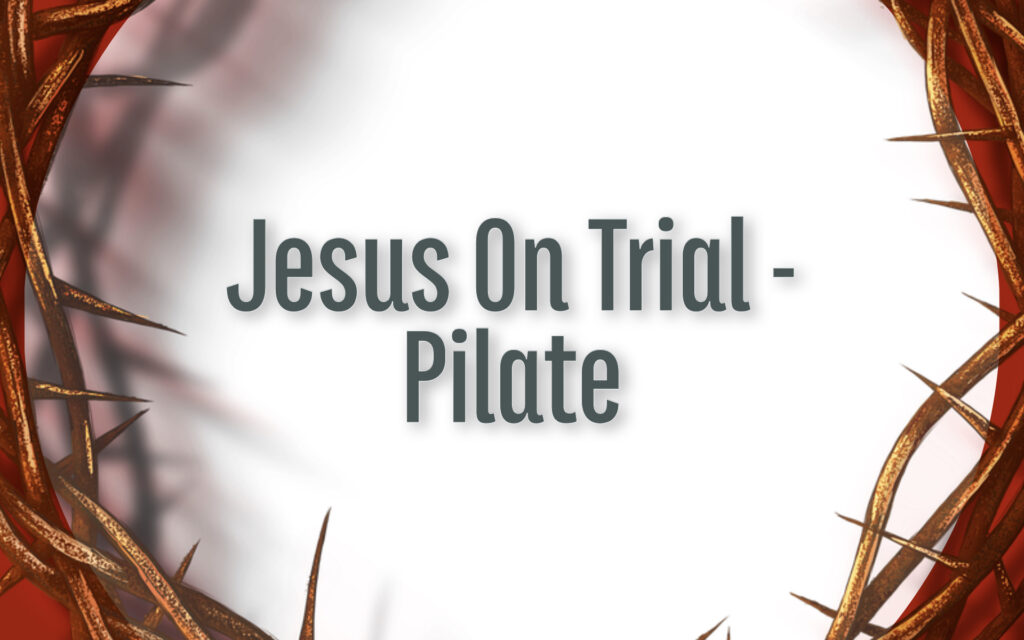The Trial That Changed Everything: Reflections on Jesus Before Pilate

In the annals of history, few trials have had such profound implications as the one that took place in Jerusalem nearly two millennia ago. As we approach the Easter season, it’s worth reflecting on the events surrounding Jesus’ appearance before Pontius Pilate – a moment that would alter the course of human history and reveal deep truths about our own nature and God’s unfathomable love.
The scene opens with Jesus, bound and brought before the Roman governor Pilate. The religious leaders, consumed by envy and threatened by Jesus’ influence, have fabricated charges against him. They cleverly reframe their accusations of blasphemy into something Pilate can’t ignore: treason against Rome. “Are you the king of the Jews?” Pilate asks, setting the stage for a cosmic drama.
As we examine this pivotal moment, several key players emerge, each representing different facets of human nature:
1. The Religious Leaders: Driven by jealousy and a desire to maintain their power, they manipulate both Pilate and the crowd. Their actions remind us how easily religious zeal can become corrupted when mixed with personal ambition.
2. Pilate: A complex figure, he recognizes Jesus’ innocence but lacks the moral courage to act on it. His famous question, “What is truth?” reveals a cynical worldview that has given up on the possibility of absolute truth. How often do we, like Pilate, compromise our convictions for the sake of expediency or to avoid conflict?
3. The Crowd: Easily swayed and whipped into a frenzy, they cry out for Barabbas to be freed and Jesus to be crucified. Their fickleness serves as a warning about the dangers of mob mentality and the importance of individual moral responsibility.
4. Jesus: In stark contrast to the chaos around him, Jesus stands in dignified silence. His restraint and willingness to face death for a greater purpose challenge our own responses to injustice and suffering.
As the trial unfolds, we see a chilling picture of human nature at its worst. Yet, paradoxically, it’s through this very injustice that God’s plan of redemption unfolds. The innocent is condemned so the guilty can go free. Barabbas, a murderer and insurrectionist, walks away while Jesus takes his place. It’s a powerful metaphor for the heart of the gospel – Christ taking our punishment so we can receive forgiveness and freedom.
This role reversal invites us to see ourselves in the story. It’s tempting to cast ourselves as the hero, to think we would have stood up for Jesus in that moment. But the hard truth is that we are more like Barabbas – guilty and deserving of punishment, yet amazingly set free because another took our place.
The trial before Pilate serves as a mirror, reflecting uncomfortable truths about human nature:
1. Our capacity for self-deception and rationalization (like the religious leaders)
2. Our willingness to compromise the truth for personal gain (like Pilate)
3. Our susceptibility to group pressure and mob mentality (like the crowd)
Yet it also reflects the astounding grace of God. In this unjust human court, we see a preview of divine justice. An innocent man willingly takes the punishment meant for the guilty. It’s a picture of substitutionary atonement – the core of Christian theology that states Christ died in our place, bearing the penalty for our sins.
As we contemplate this scene, we’re confronted with profound questions:
– Where do we see ourselves in this story?
– How often have we, like Pilate, known the right thing to do but lacked the courage to do it?
– In what ways have we been swayed by the crowd, going along with popular opinion rather than standing for truth?
– How does recognizing our own guilt in Jesus’ condemnation change our perspective on grace and forgiveness?
The trial before Pilate reminds us that while human justice is often flawed, God’s justice is perfect. It also reveals the depths of God’s love – that He would allow His Son to endure such injustice for our sake. As the prophet Isaiah wrote centuries earlier, “He was pierced for our transgressions, he was crushed for our iniquities; the punishment that brought us peace was on him, and by his wounds we are healed” (Isaiah 53:5).
This Easter season, as we remember these events, let’s not view them as distant history but as a deeply personal reality. The same Jesus who stood silent before Pilate, accepting condemnation so we could be set free, now invites us into a relationship with Him. He offers forgiveness, not based on our merit, but on His sacrifice.
The trial before Pilate also points us forward. One day, roles will be reversed. The One who stood condemned will return as the righteous Judge. On that day, as the Apostles’ Creed reminds us, He “will come again to judge the living and the dead.” How will we stand on that day? Our hope lies not in our own righteousness, but in the fact that our Judge is also our Savior.
As we go about our lives, may we live in light of these truths. May we extend grace to others, remembering the immense grace we’ve received. May we stand for justice and truth, even when it’s costly. And may we never lose sight of the astounding love demonstrated in that Jerusalem courtroom – a love that would rather die than live without us.
In a world that often feels chaotic and unjust, the trial of Jesus reminds us that God is working out His purposes, even through human failings. It challenges us to examine our own hearts, to recognize our need for grace, and to respond to that grace with lives of gratitude and purpose.
This Easter, as we contemplate the cross and the empty tomb, may we echo the words of the hymn writer: “Love so amazing, so divine, demands my soul, my life, my all.”
